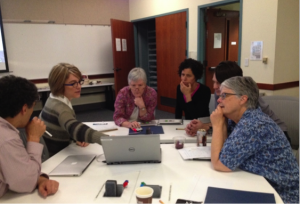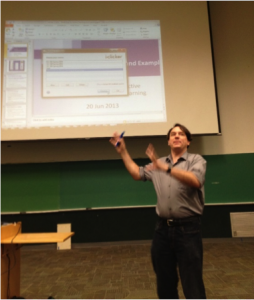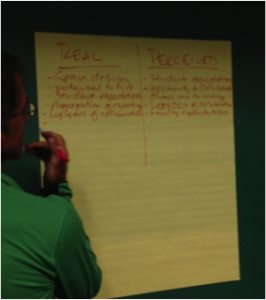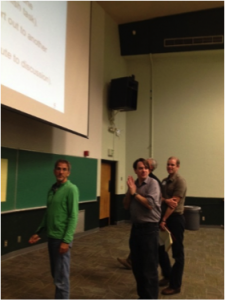The The Working Group on Active Teaching and Learning is an annual partnership between the Teaching Effectiveness Program (TEP), the Center for Media and Educational Technologies (CMET), and the Yamada Language Center (YLC) that assists a small faculty cohort as they seek to introduce active learning concepts into their courses.
The Working Group on Active Teaching and Learning is an annual course-revision cohort hosted by TEP, CMET, and YLC. Faculty members apply to enhance the creativity, interactivity, rigor, and skill building in a single course, in keeping with research on how people learn. In brief: research on teaching and learning indicates that active classes that ask students to grapple with authentic problems and questions, give prompt facilitative feedback, and align assignments and activities tightly and transparently with faculty goals have the potential to increase student learning. But how do we achieve this as individual faculty members—especially considering the particular strengths and challenges of our disciplines, classrooms, and students? The group seeks to provide an intriguing and supportive framework to help each participant find compelling answers to this question.
Each year, sixteen faculty members from across the curriculum who would like space, support, and camaraderie as they experiment with their courses participate in the working group. They might consider shifting some lecture time to participatory activities designed to boost critical thinking, building peer-learning frameworks to enhance students’ sense of ownership of course material, or exploring what technology can do to enliven the classroom and serve as a vehicle for class interaction and creative production. Staff from the partnering units work with all the group’s members to find strategies that address both common and unique learning outcomes in the wide range of disciplines represented.
- The working group on active learning brings together faculty from across UO.
- Peer learning is a highlight of the working group experience.
- Group brainstorming activities.
- The physical and virtual teaching environments were both considered.
Activities include small-group brainstorming sessions, cohort participation in TEP’s regular event series, a three-day intensive workshop in June, posts of ideas and revised course materials to the group’s private blog, and ongoing monthly luncheons. Participants receive a $1,000 stipend thanks to the generosity of Academic Affairs, the College of Arts and Sciences, and Undergraduate Studies. In two years of application cycles, there have been 67 outstanding applicants from every rank and more than two dozen different departments.
The working group idea was inspired by the UO Steelcase LearnLab Pilot Project, which has built several technology-rich, pod-style classrooms on campus. The flexible arrangement of these learning spaces fosters student participation and collaboration.
Faculty teaching in the first UO LearnLab during Fall 2013 remarked that they were able to better engage their students than in a traditional classroom thanks to the team-based classroom layout, upgraded furniture designed to support group work, and innovative audio-visual design and technologies. The Working Group explores the kinds of teaching that are possible in these active-learning spaces and, more broadly, what sophisticated, active pedagogies can look like in every classroom and lecture hall on campus.
These innovative faculty participants will eventually serve as mentors and models of best practices in active teaching and learning. Taken together, their body of work serves not only to inspire other faculty and GTFs but also to inform the design of campus learning spaces, influencing the campus and virtual environment for future UO instructors and students.





